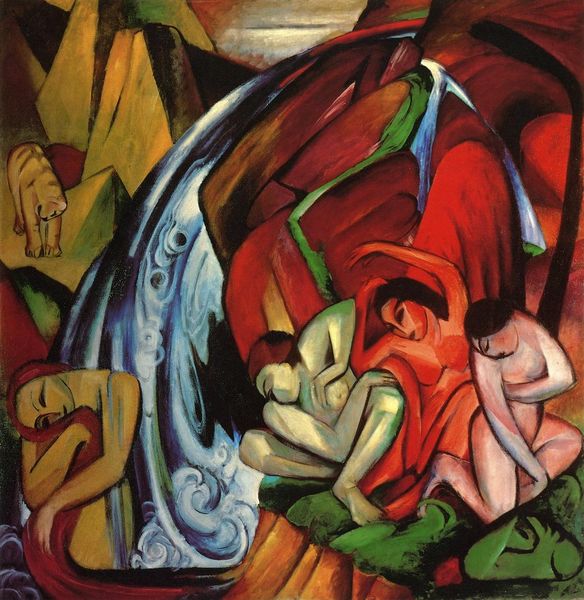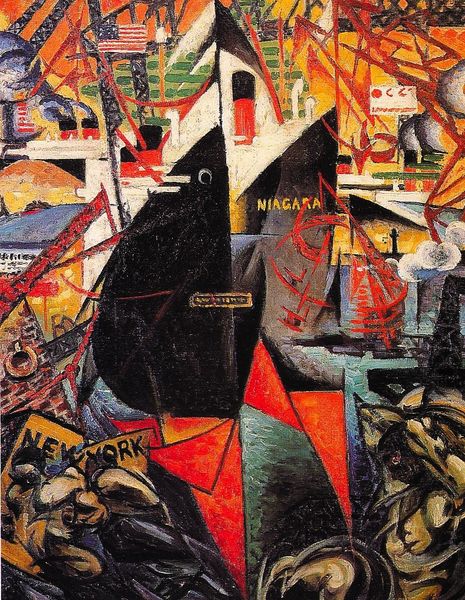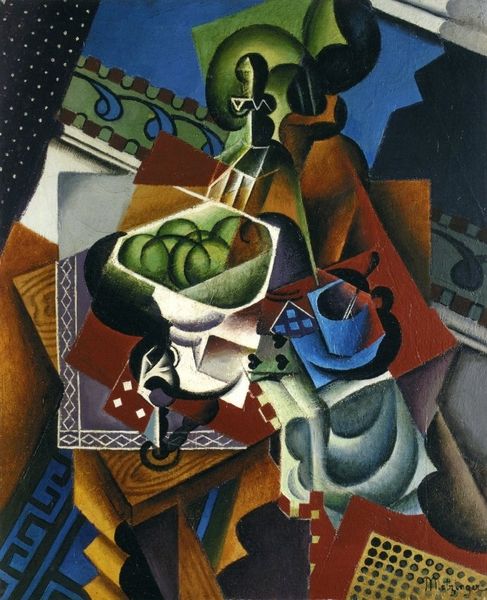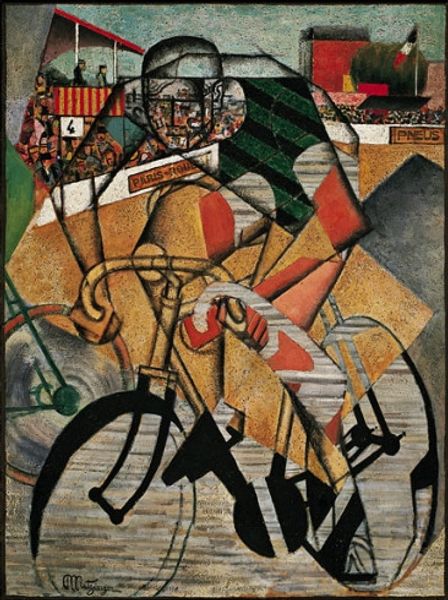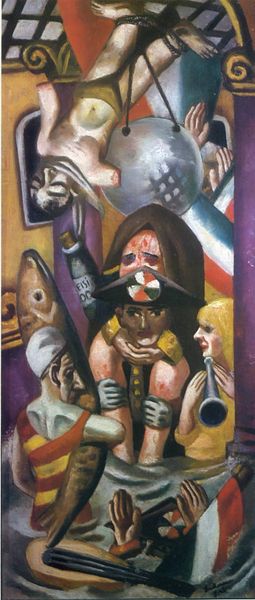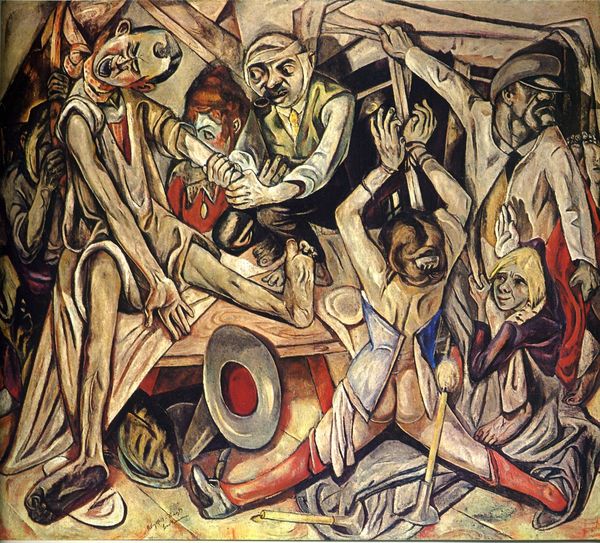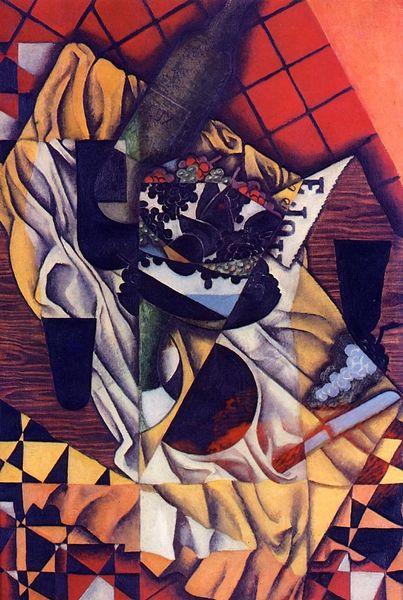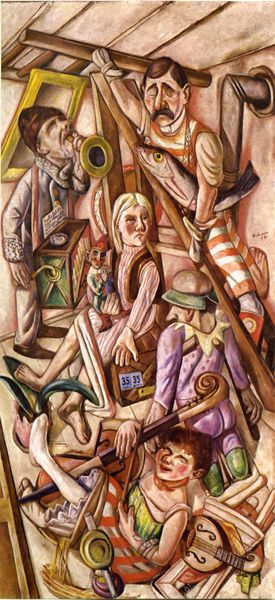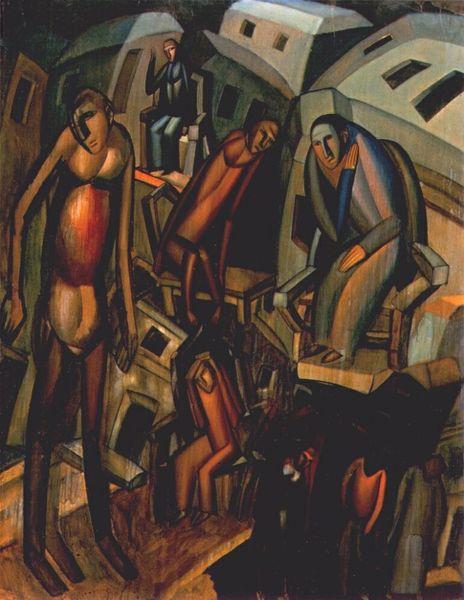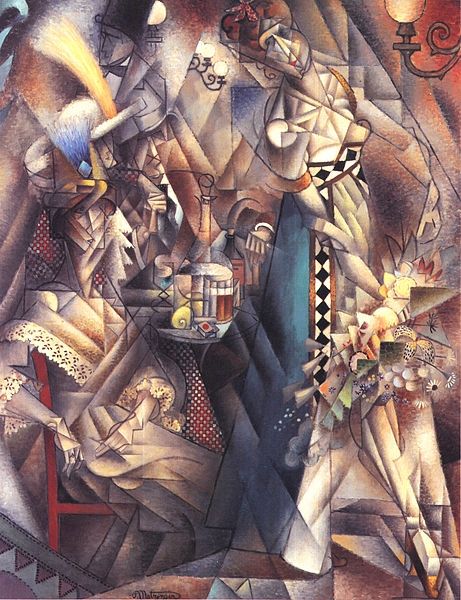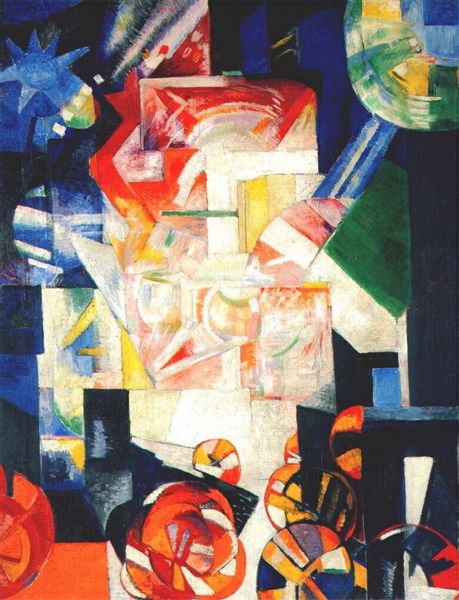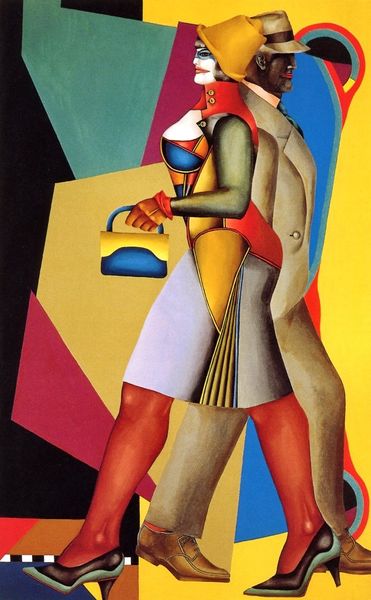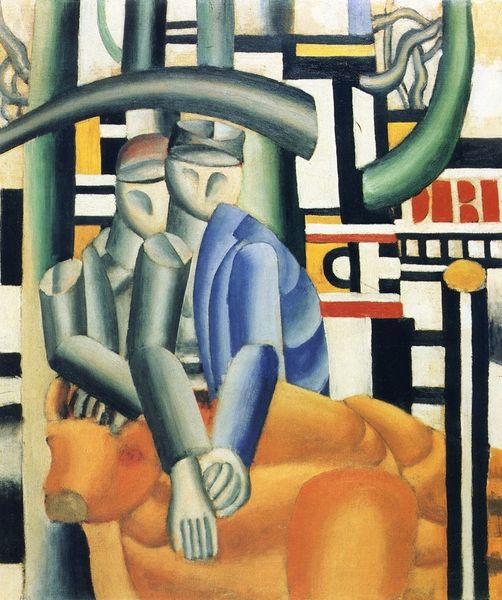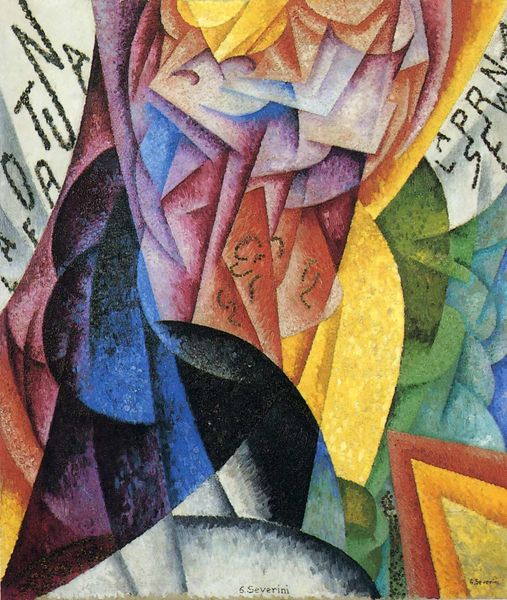
painting, fresco, mural
#
allegory
#
painting
#
figuration
#
mural art
#
fresco
#
mexican-muralism
#
history-painting
#
portrait art
#
mural
#
modernism
Copyright: Public domain
Curator: Good morning! We’re standing before "Panel 18. Modern Human Sacrifice" painted in 1934, a compelling fresco by José Clemente Orozco. Part of "The Epic of American Civilization," housed here at Dartmouth. What are your immediate thoughts? Editor: Overwhelming, definitely overwhelming. It's a dense and disturbing tableau. Those colors feel intentionally jarring, clashing in a way that amplifies the sense of unease. Like a beautiful nightmare. Curator: Absolutely. Orozco uses the fresco medium to great effect, creating a rough, almost raw surface that emphasizes the brutal subject matter. He’s playing with pre-Columbian ideas of ritual sacrifice but sets it squarely in the modern world. Editor: The wreaths arranged almost like disembodied intestines, the muted brass instruments looming on the left. Everything seems symbolic but stubbornly refuses to yield a single, tidy interpretation. I’m drawn to the hand gestures. See how they resemble both offering and supplication, pleading. Curator: It’s true. The hands reaching, grasping, in stark contrast to the formality implied by the official banners. He's critiquing the rituals of state, the ways in which modern societies can demand sacrifices just as brutally as ancient ones. Those vibrant banners might suggest a patriotic cause, but here they seem like a garish cloak hiding something monstrous. Editor: Right. He's really wrestling with the idea of progress, isn't he? Questioning the supposed triumph of modernity by exposing the underlying violence that often fuels it. The use of symbolic colors is incredible. Red becomes blood, certainly, but the whole painting is cloaked in mournful tones. A tragedy reflected in those instruments, like the last lament. Curator: I think that's right. Orozco doesn't offer easy answers or comfortable resolutions. He leaves us with this stark, uncompromising image, forcing us to confront the uncomfortable truths about ourselves and our societies. Editor: It’s the sort of work that burrows into your subconscious, provoking thought long after you’ve turned away. You get the sensation that Orozco felt impelled to reveal, to bear witness, no matter how disturbing the vision. Curator: Indeed, it leaves a lasting impact. Thanks for shedding light on the symbolic depths here, hopefully, our visitors will leave with questions, not just answers.
Comments
No comments
Be the first to comment and join the conversation on the ultimate creative platform.
